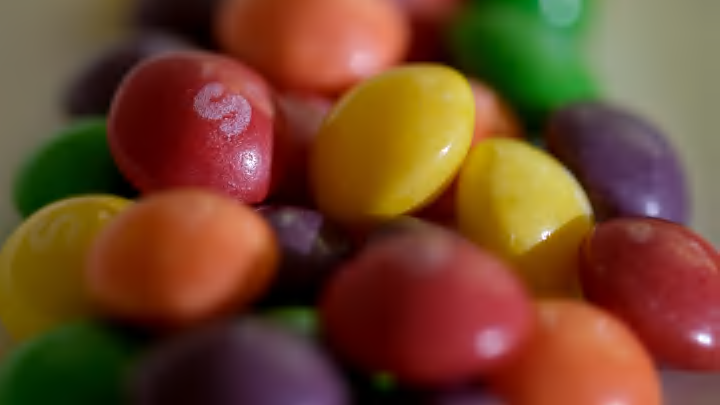Aside from being deficient in nutrition, there’s usually not much reason to consider Skittles and other candies particularly controversial. But, as Food & Wine reports, a proposed new California bill is renewing conversation about a concerning food additive and has lawmakers pondering whether some products need to be removed from shelves until the issue is resolved.
Assembly Bill 418 would ban foods containing erythrosine, or red dye No. 3, an artificial color that’s been associated with cancer in lab rats as well as other adverse effects. Skittles uses the ingredient—which can also be listed as FD&C Red No. 3 on labeling—as do other snack treats including Marshmallow Peeps, Nerds, Hot Tamales, Strawberry Nesquik, many other strawberry-flavored products, and medications like cough syrup. The ban would apply until manufacturers remove the dye from their products.
According to Consumer Reports, the concern comes from studies in which red dye No. 3 demonstrated that rats fed large amounts developed tumors in their thyroid. Other research has connected erythrosine to hyperactivity in children.
Others, however, believe the debate is overblown. The International Association of Color Manufacturers argues that humans consume the dye only in small quantities that haven’t been associated with health effects in humans. The Food and Drug Administration (FDA) has not issued any kind of ban on the ingredient in food, though they did take the step of prohibiting its use in cosmetics.
Consumer Reports has asserted that the FDA essentially grandfathered in use of the dye in food, which it allowed beginning in 1907. The cosmetics ban was instituted in 1990.
Assembly Bill 418 would also prohibit the use of titanium dioxide, which acts as a colorant; potassium bromate, which can strengthen dough in baked goods; brominated vegetable oil, which is used in some citrus products; and propylparaben, a preservative. All of them have been linked to potential health consequences in studies.
The American Chemistry Council has fired back at the bill, noting in a press release that the FDA monitors and regulates the amount of titanium dioxide used in food.
If California moves forward with the bill, it might force a sweeping change in food production: Few manufacturers will want to convert recipes for just one state. If it passes, it would go into effect January 1, 2025.
This isn’t the first time that candy has been put in the crosshairs over artificial ingredients. A similar controversy erupted over red dye No. 2, which led Mars to discontinue red M&Ms from 1976 to 1987.
[h/t Food & Wine]
